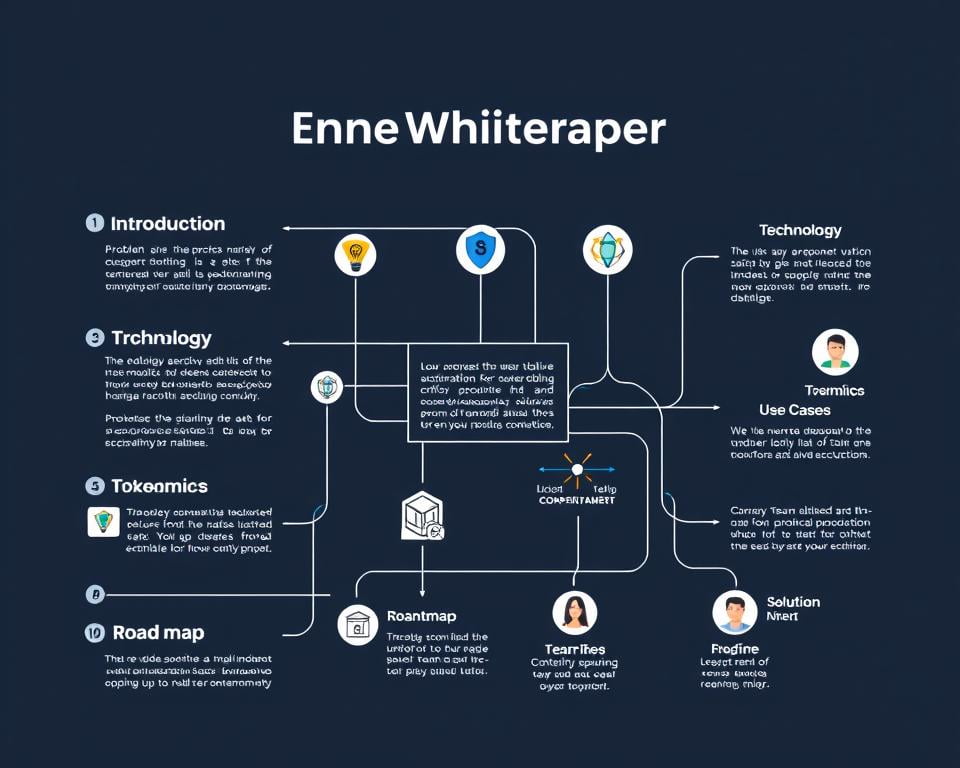How to Create Your Own Cryptocurrency: A Step-by-Step Guide Begin
Today, thousands of cryptocurrencies have popped up as new digital assets. They are changing the way we think about money. With blockchain technology, anyone can make their own cryptocurrency. This is true whether you want to start a decentralized finance system, add crypto to your apps, or explore IoT and AI.
This guide will show you how to make your own cryptocurrency. We’ll cover everything from its purpose to how to launch and keep it running. By the end, you’ll know all about making a cryptocurrency, the important things to think about, and the tech and legal stuff you need to know.
Key Takeaways
- Cryptocurrencies can be categorized into coins (like Bitcoin) and tokens (built on existing blockchains).
- Before creating a cryptocurrency, it’s crucial to understand the unique selling proposition (USP) and align it with your business goals.
- The choice between proof-of-work (PoW) and proof-of-stake (PoS) consensus mechanisms affects energy consumption, decentralization, and security.
- Building a token on an existing blockchain is often easier and cheaper than creating a coin.
- Tokenomics, relating to the supply and demand of the cryptocurrency, is crucial for project success.
Understanding Cryptocurrencies: Coins vs Tokens
The world of cryptocurrency definition is vast and always changing. It has many blockchain-based digital assets for different uses across industries. Coins and tokens are the main types of decentralized digital currencies at the heart of this digital world.
What Is a Cryptocurrency?
Cryptocurrencies are the main assets of blockchain networks. They act as a way to exchange value or store it. These fungible and non-fungible cryptocurrencies are decentralized, use blockchain or Distributed Ledger Technology (DLT), and rely on cryptography for security.
Difference Between Coins and Tokens
- Coins run on their own blockchain, like Bitcoin (BTC), Ethereum (ETH), and Litecoin (LTC). They have a special use across the network, like for gas or governance. Coins are used to store, create, or transfer value.
- Tokens, however, are made on an existing blockchain, like Ethereum’s ERC-20 and ERC-721 standards. They offer a special use for their projects, such as governance or staking. Tokens don’t use gas fees.
| Characteristic | Coins | Tokens |
|---|---|---|
| Blockchain | Operate on their own blockchain | Built on an existing blockchain platform |
| Utility | Have a specific utility over the entire network | Provide a specific utility for their own projects |
| Use Case | Used to store, create, or transfer monetary value | Not used for gas fees |
The blockchain industry is growing, and we’ll see more digital assets. These will meet the needs of different people and change industries with new social and economic chances.
“Cryptocurrencies and crypto tokens are programmable, permissionless, trustless, and transparent. They work based on smart contracts and network protocols.”
Determine the Purpose of Your Cryptocurrency
Starting to make your own cryptocurrency means first figuring out what it’s for. Cryptocurrencies can do many things, like making money transfers easy, offering a new way to store wealth, supporting smart contracts, checking data, and handling digital assets. It’s key to clearly state the main reasons why people will want to use your currency.
Dogecoin was inspired by a funny internet joke, and IMPT rewards people for cutting down on carbon emissions. These show how successful cryptocurrencies often focus on specific cryptocurrency use cases, defining your cryptocurrency’s utility, and solving real-world problems.
By clearly defining what your cryptocurrency is for, you make sure it speaks to potential users. This makes it more likely to stand out in the market. This careful planning is the base for making a successful digital currency.
“The true value of a cryptocurrency lies in its ability to solve real-world problems and provide genuine utility to users.”
There are now thousands of cryptocurrencies out there, and anyone can make their own if they have the right skills, time, and interest. You can create a cryptocurrency in several ways, like starting a new blockchain, changing an existing one, or making a new one on a current blockchain platform.
Cryptocurrencies can be used for many things, like sending money, storing wealth, making smart contracts, verifying data, and managing digital assets. Thinking deeply about the use cases and market needs is key to defining your cryptocurrency’s utility and making sure it will last.
Select a Suitable Blockchain Platform
Choosing the right blockchain platform is key when making your own cryptocurrency. These platforms are the backbone that record and spread every transaction, making sure everything is clear and honest. You need to think about the consensus mechanism, how big the platform can grow, and what your cryptocurrency needs.
Popular Blockchain Platforms
Here are some top blockchain platforms for making your own cryptocurrency:
- Ethereum – The top choice for smart contracts and hosting many decentralized apps and tokens.
- BNB Chain – Known as Binance Smart Chain, it’s fast and cheap, similar to Ethereum.
- Tron – Built for lots of transactions and creating decentralized apps and digital assets.
- Solana – Fast and growing, it can handle thousands of transactions per second.
- Waves – An open-source platform for making and managing your own digital assets and tokens.
- Polygon – A layer-2 solution on top of Ethereum, it’s faster and cheaper.
- Stellar – A blockchain for cross-border payments and making digital assets.
Your choice of blockchain platform depends on what you need, like how it handles transactions and supports your cryptocurrency project.
| Blockchain Platform | Consensus Mechanism | Scalability | Key Features |
|---|---|---|---|
| Ethereum | Proof of Work (PoW) | Moderate | Smart contracts, decentralized apps, large developer community |
| BNB Chain | Proof of Staked Authority (PoSA) | High | Fast transactions, low fees, Ethereum compatibility |
| Tron | Delegated Proof of Stake (DPoS) | High | Decentralized apps, digital asset creation, cross-chain interoperability |
| Solana | Proof of History (PoH) | Extremely High | Blazing-fast transaction speeds, low fees, scalable design |
| Waves | Leased Proof of Stake (LPoS) | Moderate | Asset tokenization, decentralized exchange, user-friendly platform |
| Polygon | Proof of Stake (PoS) | High | Scalability, low fees, Ethereum compatibility |
| Stellar | Stellar Consensus Protocol (SCP) | High | Cross-border payments, asset issuance, decentralized exchange |
Choose a Consensus Mechanism
When making your own cryptocurrency, picking a consensus mechanism is key. This protocol decides how the blockchain network checks transactions and adds new blocks. You have several options, each with its own pros and cons for energy use, decentralization, and security.
Proof of Work (PoW)
Bitcoin uses Proof of Work. Miners solve tough math problems to make a new block. This needs a lot of computer power and energy but keeps the network safe and spread out.
Proof of Stake (PoS)
Proof of Stake is different. Miners work together to make a block, and one gets a reward randomly. It uses less energy than PoW and lets more people join in.
Delegated Proof of Stake (DPoS)
Delegated Proof of Stake is a twist on PoS. Users pick representatives to do the validating for them. It’s quicker and can handle more transactions, but might be less spread out.
Proof of Elapsed Time (PoET)
Intel created Proof of Elapsed Time. It’s all about being energy-smart and secure. Nodes wait randomly to see who makes the next block, making it fairer than other methods.
Choosing a consensus mechanism affects your cryptocurrency’s energy use, spread, and security. Think about each method’s good and bad points to pick the best for your project.
| Consensus Mechanism | Description | Energy Consumption | Decentralization | Security |
|---|---|---|---|---|
| Proof of Work (PoW) | Miners solve complex mathematical problems to validate transactions and earn rewards. | High | High | High |
| Proof of Stake (PoS) | Stakeholders with cryptocurrency holdings validate transactions and earn rewards. | Low | Moderate | Moderate |
| Delegated Proof of Stake (DPoS) | Users elect delegates to validate transactions on their behalf, resulting in faster and more scalable consensus. | Low | Moderate | Moderate |
| Proof of Elapsed Time (PoET) | A random wait time determines the next node to create a block, promoting energy efficiency and fairness. | Low | High | High |

“The choice of consensus mechanism is a critical decision that will shape the fundamental characteristics of your cryptocurrency.”
Prepare the Nodes for Your Blockchain
After picking a blockchain platform for your cryptocurrency, it’s time to set up the nodes. Nodes are powerful computers that connect to the network. They verify and process transactions, keeping the currency running and adding data to the digital ledger.
Considerations for Setting Up Nodes
There are several important things to think about when setting up nodes for your blockchain:
- Node Access and Control: Decide if nodes will be open to anyone or only to certain people or groups.
- Node Hosting: Choose between cloud-based or on-premises nodes. Think about cost, how big the network can get, and upkeep.
- Operating System: Pick an operating system like Linux, Windows, or macOS. Make sure it works well with your blockchain platform.
- Hardware Requirements: Make sure nodes have enough power, memory, and storage. This helps them process transactions and keep the blockchain running smoothly.
| Consideration | Cloud-based Nodes | On-premises Nodes |
|---|---|---|
| Access and Control | More flexible, can be public or private | Typically more restricted, often private |
| Hosting | Hosted by cloud provider, scalable | Managed by your organization, less scalable |
| Maintenance | Cloud provider handles updates and maintenance | Your organization is responsible for updates and maintenance |
| Cost | Subscription-based, can be more cost-effective for smaller-scale projects | Higher upfront investment, but potentially lower long-term costs for larger-scale projects |
Think about these factors carefully to make sure your blockchain network has strong and dependable nodes. This will help your cryptocurrency succeed.
How to Create Your Own Cryptocurrency
Starting with cryptocurrency creation is both exciting and rewarding. You can build a new blockchain, change an old one, or make a token on a big platform. It’s key to know how to make your own digital money.
Building a New Blockchain (Coin)
Starting from scratch is the toughest way, needing top coding skills and deep blockchain knowledge. It lets you fully customize your coin but takes a lot of time and effort. You’ll design the way it works, set its rules, and build the needed systems.
Modifying an Existing Blockchain (Coin)
Another way is to change an old blockchain by copying its code. This is easier for those with some coding skills. You can make a new coin that’s similar to an old one but also has new things.
Creating a Token on an Existing Blockchain
The simplest way is to make a token on a big blockchain like Ethereum or BNB Chain. This way, you get to use their security and size without making everything from zero. You don’t need as much coding knowledge, making it good for beginners.
| Method | Difficulty | Customization | Startup Costs |
|---|---|---|---|
| Building a New Blockchain (Coin) | High | High | High |
| Modifying an Existing Blockchain (Coin) | Moderate | Moderate | Moderate |
| Creating a Token on an Existing Blockchain | Low | Low | Low |
No matter how you start, making a cryptocurrency needs a lot of planning and legal stuff. Knowing the tech and rules well can help you launch your coin successfully. This way, you can join the growing world of digital money.

Design the Blockchain Architecture
Creating your own cryptocurrency means focusing on the blockchain architecture. You can choose from centralized to decentralized structures, each with pros and cons. It’s key to know these differences to pick the best for your project.
Consider the debate between centralized vs. decentralized blockchain architecture. Centralized blockchains rely on a single entity for management. Decentralized ones spread across many nodes, ensuring no single control. For cryptocurrencies, decentralized systems are common for their transparency and security.
Think about blockchain addressing and data access too. Decide who can see the blockchain data and make transactions. The address format also matters for security and ease of use.
- Set the transaction and block size limits for your blockchain. These choices affect how fast and big your network can grow.
- Plan the mining rewards to motivate people to keep the blockchain safe and running smoothly.
Designing your blockchain well is key to a successful cryptocurrency. It sets the stage for your project’s launch and ongoing success.
“The blockchain architecture must be designed to meet the specific requirements and use case of the cryptocurrency project.”
Establish APIs for Your Cryptocurrency
Creating your own cryptocurrency means setting up strong APIs. These APIs connect your blockchain to the outside world. They let users trade, keep data safe, and analyze data easily.
Building a basic crypto trading app can cost between $25,000 and $100,000. A complex app might cost $100,000 to $500,000. Adding APIs makes your cryptocurrency more useful. It gives users a full platform for their digital money.
The Binance API is a top choice for connecting to the Binance exchange. To use it, create a Binance account, get an API key, and a secret key for security. Other big APIs include Coinbase, Kraken, and Infura Ethereum. Each has its own features, rules, and fees.
For your cryptocurrency’s API, you can use languages like Python, JavaScript, Java, and Swift. Frameworks like Flask help build web apps and connect APIs. Libraries like Requests (for Python) make talking to APIs easier.
For storing user info and transactions, think about databases like SQLite, MySQL, or PostgreSQL. Tools like Flask-Login, Flask-WTF, and Flask-SQLAlchemy help with user login, forms, and database work.
A strong API setup opens up many possibilities for your cryptocurrency. It makes trading smoother, data safer, and analysis deeper. This can help your digital money stand out in the fast-changing crypto market.
| API | Key Features | Limitations | Fees |
|---|---|---|---|
| Binance API | – Access to Binance crypto exchange – Trading and order management – Market data and analysis | – API key and secret key required – Strict request rate limits | – Varied transaction fees – Withdrawal fees |
| Coinbase API | – Access to Coinbase crypto exchange – Trading and account management – Real-time market data | – API key and secret key required – Limited free API calls | – Varied transaction fees – Withdrawal fees |
| Kraken API | – Access to Kraken crypto exchange – Advanced trading features – Comprehensive market data | – API key and secret key required – Complex documentation | – Varied transaction fees – Withdrawal fees |
The blockchain market is expected to grow to $1.43 billion by 2030. With a growth rate of 80% to 88% annually, now is the time to use blockchain API integration, cryptocurrency data security, trading and analysis APIs, and third-party API solutions. This can help your cryptocurrency succeed in the growing market.

“Integrating APIs can significantly enhance the functionality and value of your cryptocurrency, providing users with a comprehensive platform for managing their digital assets.”
Create a User-Friendly Interface
For your cryptocurrency project to succeed, focus on the user interface (UI) and user experience (UX) design. A well-designed interface makes it easy for people to use your cryptocurrency. This encourages more people to adopt and use it.
Creating your cryptocurrency means building a server, database, and a website or app. This allows users to manage their cryptocurrency data and settings. Make sure the UI and UX are top priorities. They are crucial for your project’s success.
Importance of UI/UX
Effective cryptocurrency user interface design and user experience optimization are key for several reasons:
- Improved user engagement: A user-friendly interface boosts user engagement. This leads to more people using your cryptocurrency.
- Seamless navigation: A good UI makes it easy for users to find what they need. This reduces frustration and makes the experience better.
- Competitive advantage: Investing in web and mobile app development with a focus on UI/UX can set your cryptocurrency apart. Users prefer platforms that are easy to use.
- Increased trust: A good-looking and easy-to-use interface builds trust with users. This leads to loyalty and long-term engagement.
- Improved front-end and back-end programming: Thinking about UI/UX during development makes for better user experience and platform performance.
By focusing on the UI/UX of your cryptocurrency, you can make a platform that looks good and works well. This approach drives user adoption and helps your cryptocurrency succeed in the long run.
Understand Legal Considerations
Creating a new cryptocurrency means looking at the legal side. You need to set up a legal entity and get the right licenses. Also, you must register with groups like the Financial Crimes Enforcement Network (FinCEN) in the U.S. to prevent money laundering.
Cryptocurrencies don’t have a central authority. They’re seen as property for tax purposes, not legal money. The U.S. Securities and Exchange Commission (SEC) might see a cryptocurrency as a security. This depends on the Howey Test, which checks if a deal is an “investment contract.” It’s important to work with legal experts in financial tech and digital assets when starting a cryptocurrency to follow the rules.
Some states have their own laws for cryptocurrencies. For instance, Missouri says activities with securities, including digital ones, must follow securities laws. The Missouri Securities Division oversees these activities. Knowing and following the legal rules for cryptocurrencies is key to avoiding legal problems later.
| Cryptocurrency Legal and Regulatory Requirements | Money Laundering Prevention | Financial Licenses and Registrations | International Crypto Regulations |
|---|---|---|---|
| – Establishing a legal entity – Acquiring necessary licenses – Complying with securities laws (e.g., Howey Test) | – Registering with FinCEN and other anti-money laundering agencies – Implementing KYC and AML procedures | – Obtaining relevant financial services licenses – Registering with state-level authorities (e.g., Missouri Securities Division) | – Researching and adhering to cryptocurrency regulations in target markets – Consulting with experienced legal professionals in international crypto laws |
By understanding and tackling legal issues, cryptocurrency developers can make sure their project meets the rules. This helps avoid legal problems in the future.

Tokenomics: Supply and Demand
Tokenomics is key to a digital asset project’s success. It involves the balance of token supply, distribution, and demand. This balance affects your cryptocurrency’s long-term value and adoption. As a developer, it’s crucial to design your token’s tokenomics well for growth and sustainability.
The balance between supply and demand is central to tokenomics. The total tokens available, how they are released, and how they are managed can change their value. By managing these factors well, you can make a token that attracts investors and meets your project’s needs.
Token utility is also important. Tokens that offer real value and a clear purpose in your ecosystem tend to be more in demand. They could give access to services, allow for governance, or make transactions easier. Your token’s utility should match your project’s goals.
How your tokens are distributed can also affect their value and adoption. Giving tokens to founders, investors, and the community fairly and transparently builds trust. This trust leads to long-term support for your project.
Strategies like token burning and buybacks can also help your token. These methods can manage the supply, making your token seem rarer and possibly increasing its value over time.
By thinking about these tokenomics factors and matching them with your project’s vision, you can create a cryptocurrency that draws investors and supports a strong ecosystem. Understanding tokenomics is key to making your cryptocurrency dream a success.
“Tokenomics is the backbone of any successful cryptocurrency project. By meticulously designing the supply, distribution, and utility of your token, you can unlock the true potential of your digital asset.”
Develop Your Cryptocurrency’s Whitepaper
Before starting a cryptocurrency, developers write and share a detailed whitepaper. This document explains the goals, tech, and economy of the cryptocurrency. It’s key for early fundraising and drawing supporters. It covers the use case, technical specs, tokenomics, and roadmap of the project.
The whitepaper must be well-researched and easy to read. It should show the project’s strength and potential.
Elements of a Whitepaper
A whitepaper has important parts like an outline, introduction, and details on how it works. It also includes the consensus mechanism, examples, diagrams, and a conclusion. The goal is to give a full view of the cryptocurrency’s structure, tech, use case, and roadmap.
The Bitcoin whitepaper from 2008 was short and to the point. It had 9 pages and 12 sections. On the other hand, the Ethereum whitepaper from 2014 was longer, with 36 pages. It went into great detail about the platform.
Whitepapers are crucial for new cryptocurrencies. They give a deep look at the project and help draw investors. Some people start crypto projects quickly, even without much tech knowledge. This shows that anyone can try to launch a cryptocurrency.
Creating coins on a new network is hard and takes a lot of time. You need a strong tech background for this. But, making tokens on an existing blockchain is easier. It doesn’t need as much tech skill and can be done faster.
Tokens are simpler to launch than coins. They often don’t take as long to be ready for use. But, a good whitepaper is key for any crypto project. It shows the use case, tech, tokenomics, and roadmap of the project.

“Whitepapers are essential for introducing new cryptocurrencies, providing a thorough description of projects, and attracting investors.”
Launch and Maintain Your Cryptocurrency
Launching and keeping a successful cryptocurrency takes a lot of work. You need a good plan, strong marketing, and ongoing updates. Your plan should aim to make people aware, build a community, and get users to join.
Here are some steps to start your cryptocurrency’s journey:
- Cryptocurrency Launch Strategy: Make a detailed launch plan. This should include marketing before launch, ICOs, and partnerships to get attention. Use social media, online groups, and events to reach people.
- Marketing and Community Building: Spend on marketing and building a community to keep users engaged and loyal. Share updates, plans, and new features often to keep your community excited.
- Ongoing Maintenance and Updates: Keep an eye on how your cryptocurrency is doing, listen to user feedback, and update the software. This helps fix problems, improve the experience, and keep your cryptocurrency strong.
- User Adoption and Growth: Keep working to get more users and grow through rewards, partnerships, and working with other platforms. Watch important numbers like transactions and market value to see how you’re doing.
Launching and keeping a cryptocurrency is a continuous effort. It needs dedication, being able to change, and knowing the market and your audience well. With a solid launch plan, a strong community, and regular updates, you can help your cryptocurrency succeed and grow over time.
“The key to a successful cryptocurrency launch is to create a compelling value proposition, build a loyal community, and continuously evolve to meet the needs of your users.”
Conclusion
Making your own cryptocurrency is a big task. It needs a deep knowledge of blockchain, good planning, and a focus on lasting success. You must think about what your token will do and its use from the start. Then, you’ll face technical and business hurdles that require a lot of time, effort, and expertise.
It’s also key to think about your cryptocurrency’s future growth and success. Things like token economics, how big it can get, keeping it safe, and building a community matter a lot. Keeping up with laws and changing market needs is also vital to stay ahead.
Creating a successful cryptocurrency is hard, but the benefits can be huge. By tackling the main challenges, focusing on long-term success, you can make your cryptocurrency valuable and trusted. This way, you can stand out in the changing world of cryptocurrencies.
FAQ
What is a cryptocurrency?
Cryptocurrencies are digital or virtual currencies secured by cryptography. This makes them hard to counterfeit or double-spend. They run on a decentralized network, often using blockchain technology. No central authority controls them.
What is the difference between a cryptocurrency coin and a token?
Coins have their own blockchain and a specific use across the network, like for gas or governance. Tokens, however, are built on an existing blockchain. They offer a special utility for their projects, not for gas fees.
How do I determine the purpose of my cryptocurrency?
Start by defining a clear use case for your digital currency. This could be for money transfer, storing wealth, supporting smart contracts, verifying data, or managing assets. Make sure to highlight the benefits of your cryptocurrency before launching it.
What are some popular blockchain platforms used to create cryptocurrencies?
Popular blockchain platforms for creating cryptocurrencies include Ethereum, BNB Chain, Tron, Solana, Waves, Polygon, and Stellar. The choice depends on the consensus mechanism, scalability, and your project’s needs.
What are the different consensus mechanisms used in cryptocurrencies?
Common consensus mechanisms are Proof of Work, Proof of Stake, Delegated Proof of Stake, and Proof of Elapsed Time. Each affects energy use, decentralization, and security.
What are the main ways to create a cryptocurrency?
You can create a cryptocurrency by building your own blockchain, modifying an existing one, or using an existing blockchain. Building your own is the most challenging. Creating a token on an existing blockchain is easier and less resource-heavy.
What are the key considerations for the blockchain architecture?
Think about the blockchain’s design, which can be centralized, decentralized, or distributed. Consider the blockchain addresses, data access, asset creation rules, block and transaction limits, and mining rewards.
Why is API integration important for a cryptocurrency?
APIs add functionality like tracking the currency’s price, pulling blockchain data, and integrating with other apps and services. They’re used for trading, data security, and cryptocurrency analysis.
What are the legal considerations for creating a cryptocurrency?
Set up a legal entity, get the right licenses, and register with groups fighting money laundering. Knowing and following the legal rules for cryptocurrencies helps avoid legal problems later.
What are tokenomics and why are they important?
Tokenomics deal with the supply and demand of a cryptocurrency. Things like total supply, token release, creator ownership, and burning or buyback mechanisms affect its value and adoption. Good tokenomics planning is key for the cryptocurrency’s success.


